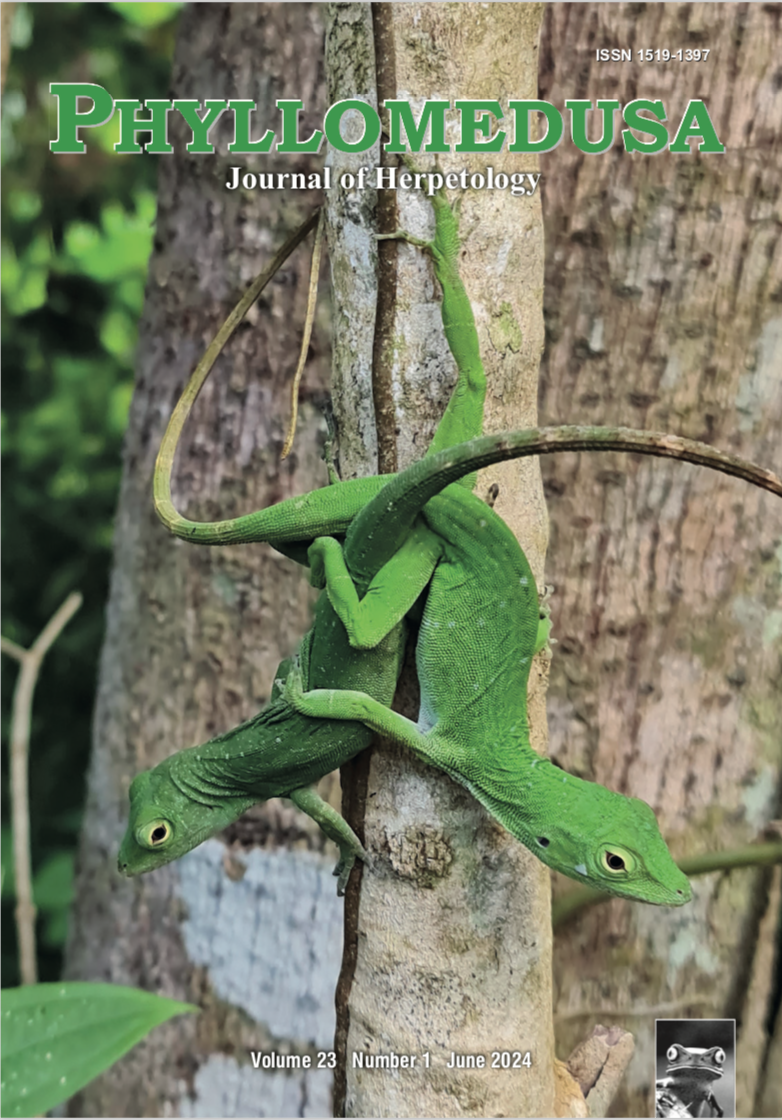An experimental evaluation of substrate type and color selection by the endangered salamander Ambystoma altamirani (Caudata: Ambystomatidae)
DOI:
https://doi.org/10.11606/issn.2316-9079.v23i1p35-42Keywords:
Arroyo los Axolotes, Behavior, Mexico, Microhabitat, Mountain Stream SiredonAbstract
The stream habitats of Mexican Ambystoma are being degraded by human activities, which can have detrimental effects on their populations. A better understanding of the microhabitat and habitat use of these amphibians is therefore important. We used preference experiments to examine the selection of substrate type (gravel, mud, sand, and stone) and color (dark brown, brown, light brown, and gray) by the endangered, endemic salamander Ambystoma altamirani. Ambystoma altamirani used mud substrates more than the other substrate types. Overall, A. altamirani showed no preference for substrate color; however, females used light brown substrates significantly more often and gray substrates less often than males and juveniles did. These experimental results are consistent with the observed substrate type use of A. altamirani in the field, but the lack of a substrate color preference differed from the observed preference for dark brown substrates in the field.
Downloads
Downloads
Published
Issue
Section
License
Copyright (c) 2024 ESALQ-USP

This work is licensed under a Creative Commons Attribution-NonCommercial-NoDerivatives 4.0 International License.
All material originally published in Phyllomedusa belongs to Escola Superior de Agricultura Luiz de Queiroz - Universidade de São Paulo. All contents are under a license of Creative Commons BY-NC-ND.


 Impact Factor (JCR): 0.600
Impact Factor (JCR): 0.600 CiteScore: 1.0
CiteScore: 1.0